The early MiG-23 variants had a number of design shortcomings, including airframe strength and reliability, engine performance, maneuverability and radar performance. A considerable redesign of the airframe was conducted, resulting in the MiG-23ML (L – Lyogkiy or lightweight), which was given the NATO designation “Flogger-G”.
Empty weight was reduced 1,250 kg (2,760 lb) by removing the No. 4 fuselage fuel tank. Aerodynamics were refined for less drag, with the dorsal fin extension removed. The lighter weight of the airframe and a redesign of the main undercarriage units resulted in a different sit on the ground, with the aircraft’s nose at a lower attitude compared to the nose-high appearance of earlier variants. Structural weaknesses, in particular the wing pivot mechanism, were strengthened so that the airframe was now rated for a G-limit of 8.5 at speeds below Mach 0.85 and 7.5-G at faster speeds.
This also allowed the angle of attack (AoA) limiter to be set to 20-22° with the wings fully swept back, and 28-30° otherwise. A new engine model, the R-35F-300, now provided a maximum dry thrust of 83.82 kN (18,840 lbf), and 128.08 kN (28,790 lbf) with afterburner. This led to a considerably improved thrust-to-weight ratio of 0.83 (versus 0.77 for the MiG-23M), though in real-world conditions the ratio would be lower due to engine ‘detuning’, and a lower specific fuel consumption of 1.96 kg/kgf.h at maximum afterburn (versus 2.09 in the earlier R-27F2M-300).
After initial issues of reliability, the time between overhauls was also extended to 450 hours, though like earlier engines it was limited to only ten hours at full military power or afterburner. The avionics set was considerably improved as well. The S-23ML standard included Sapfir-23ML radar and TP-23M IRST. The Polyot-21-23 navigation suite, Lasour-23SML datalink, SAU-23AM flight control system, and RV-5R Reper-M radar altimeter were all improvements on previous systems. Thanks to the new SUV-2ML weapons system, the MiG-23ML could carry both types of R-23 BVR missiles, and the underwing pylons could accommodate UPK-23-250 23mm gun pods.
Overall the MiG-23ML’s combat effectiveness was about 20 per cent better than the MiG-23M according to Mikoyan OKB. Instantaneous turn rate was 16.7° per second at a corner speed of 780 km/h (480 mph) and 27° AoA; average rate of turn was 14.1° per second. Completing a 360° turn at an altitude of 1,000 m (3,300 ft) took 27 seconds at an average of 6.5-G, with an entry speed of 900 km/h (560 mph) and final speed of 540 km/h (340 mph). At the same altitude, accelerating from 600 km/h (370 mph) to 1,000 km/h (620 mph) at full afterburn took 12 seconds, while the rate of climb was 215 m/s (710 ft/s), though this fell off as altitude increased. In total, the time it took a MiG-23ML to take off and reach 15,000 m (49,000 ft) while accelerating to Mach 2.1 on full afterburner was 4.3 minutes. The MiG-23ML prototype first took flight on 21 January 1975 and quickly entered mass production later that same year, though export customers continued to receive the MiG-23MF for another seven years. More than 1,100 MiG-23MLs (and its derivatives including the MiG-23MLA) were built for Soviet and export users between 1978 and 1983.

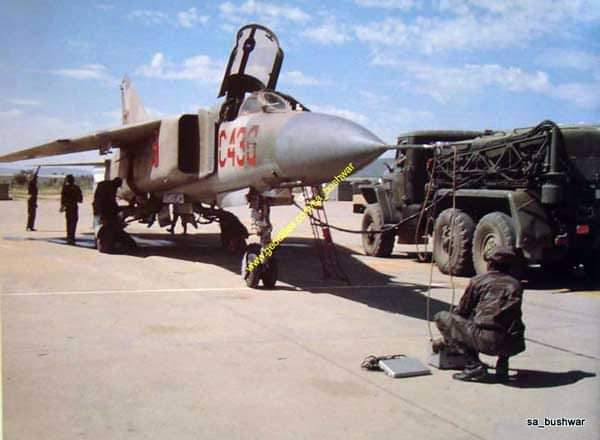
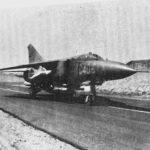
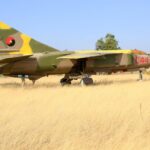
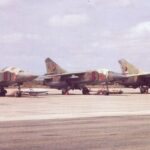

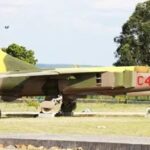



0 Comments